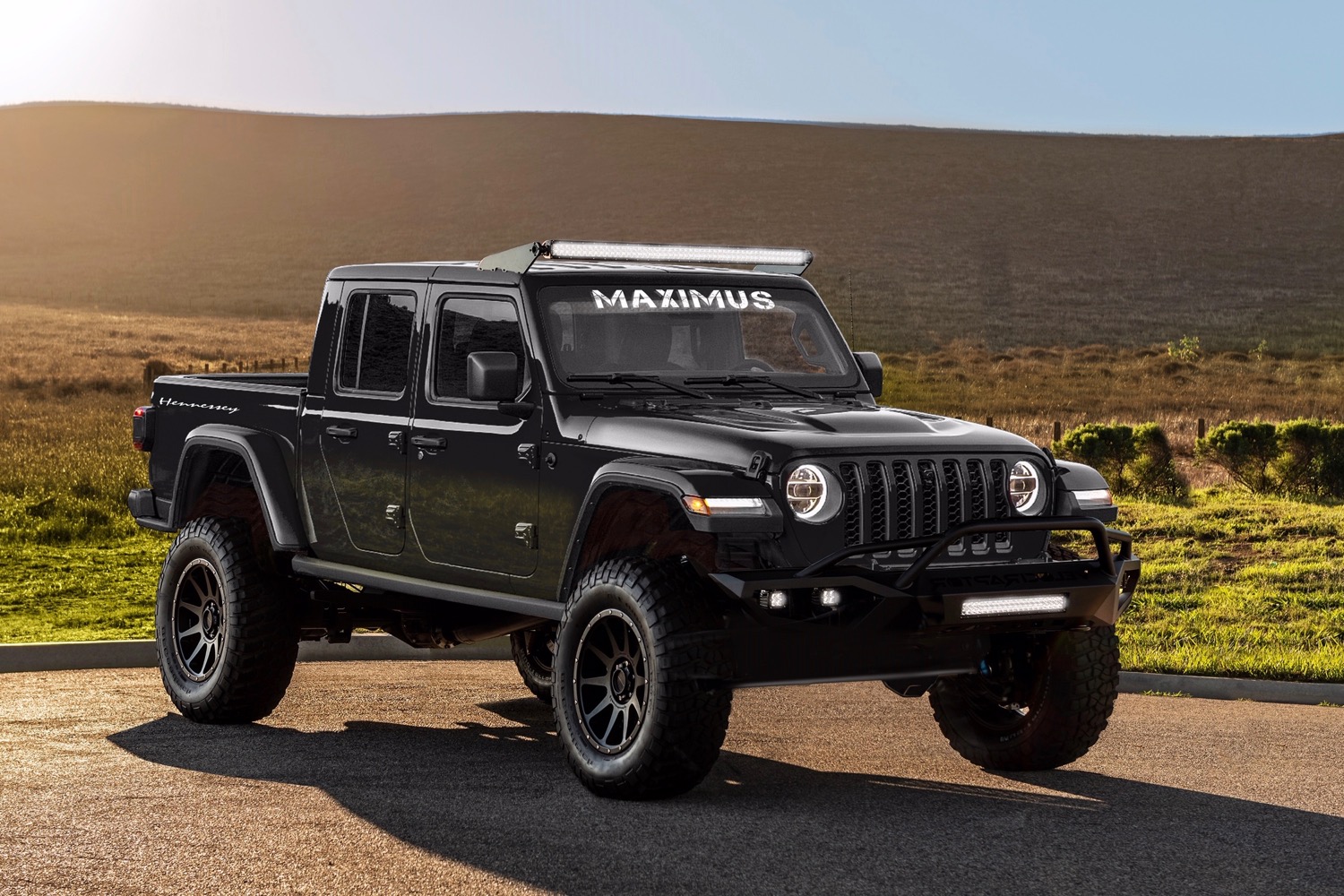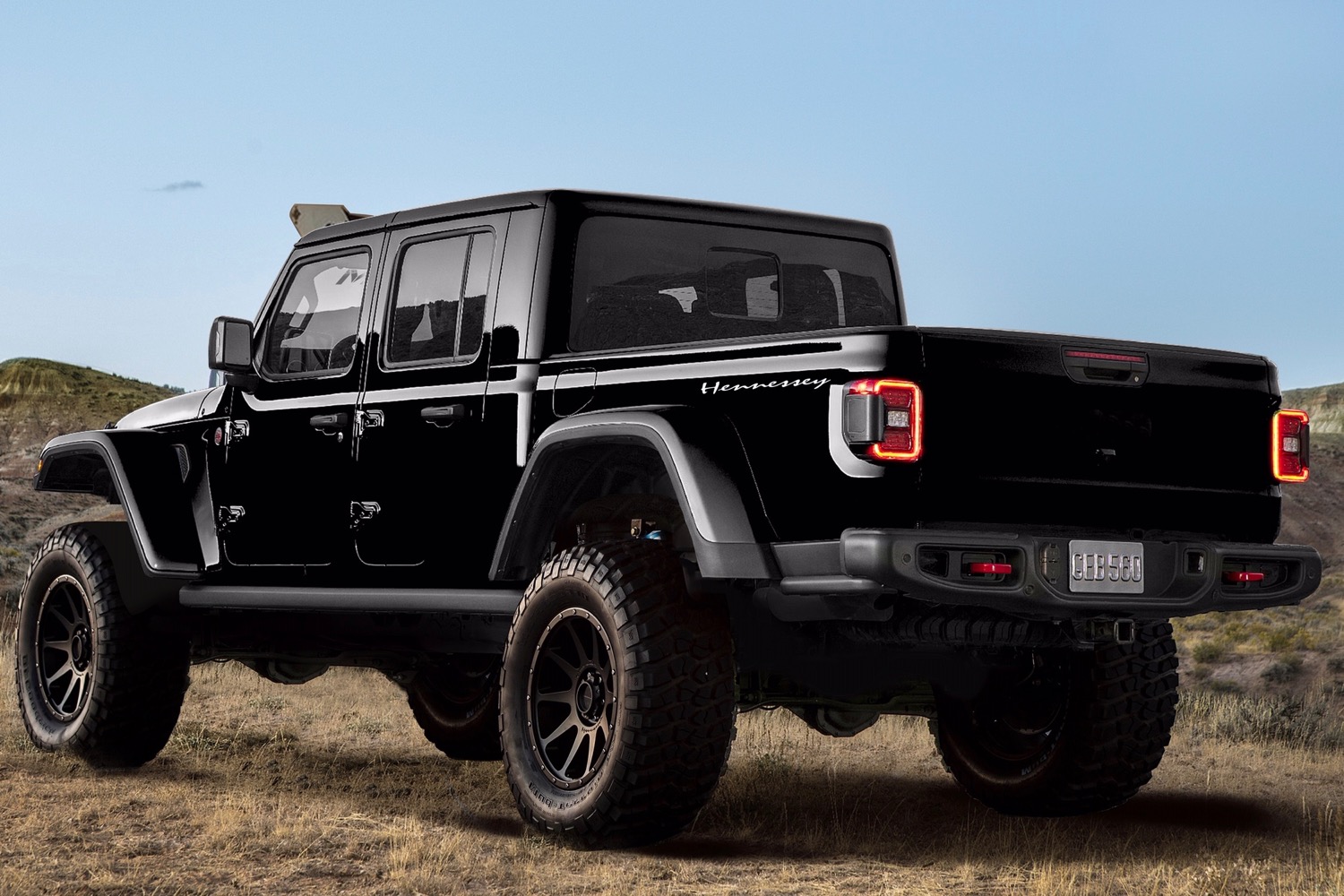The Jeep Gladiator and the Hellcat V8 engine are two products from Fiat Chrysler Automobiles (FCA) guaranteed to generate buzz, so what happens when you put them together? Texas tuner Hennessey Performance stuffed a Hellcat engine into a Gladiator to create the Maximus 1000 — so named because it has 1,000 horsepower. Are you not entertained?
The Hellcat engine doesn’t make anywhere near 1,000 hp in stock form, so Hennessey treated the 6.2-liter supercharged Hemi V8 to some upgrades. The engine control unit, wiring harnesses, radiator, and fuel system were all customized, and Hennessey fitted a bespoke stainless steel exhaust system. In addition to its four-figure horsepower number, the Maximus’ V8 makes 933 pound-feet of torque. Power is channeled to all four wheels through an eight-speed automatic transmission.
Hennessey made some changes to the rest of the truck as well. It installed a 6.0-inch suspension lift kit and 20-inch BFGoodrich KD Off-Road tires. New front and rear bumpers and a smattering of LED lighting give the truck a more aggressive look. The interior gets custom leather upholstery.
Jeep actually looked at installing a Hellcat engine in the Gladiator, but encountered a problem. While the engine did fit, it didn’t leave enough clearance for crush zones, making it harder for the vehicle to absorb energy in a crash, Jeep boss Tim Kuniskis has said. He previously claimed a Hellcat-powered Gladiator would not pass federal crash tests, which is why Jeep hasn’t offered the combination from the factory. Rumor has it that Jeep will launch a sportier version of the Gladiator, but likely with a smaller engine.
Because it is modifying existing vehicles, not building them from scratch, Hennessey doesn’t have to worry about crash-test certification for its Hellcat-powered Gladiator. The company is known for crazy projects like the 1,000-hp Exorcist Chevrolet Camaro, six-wheeled pickup trucks, and the Venom F5, a supercar that Hennessey claims will top 300 mph.
Hennessey only plans to build 24 Maximus 1000 Gladiators. Putting one in your garage will cost $200,000, although Hennessey said that includes the price of a stock Jeep Gladiator base vehicle. Production starts in July, and each vehicle is expected to take about four months to build, according to Hennessey.





